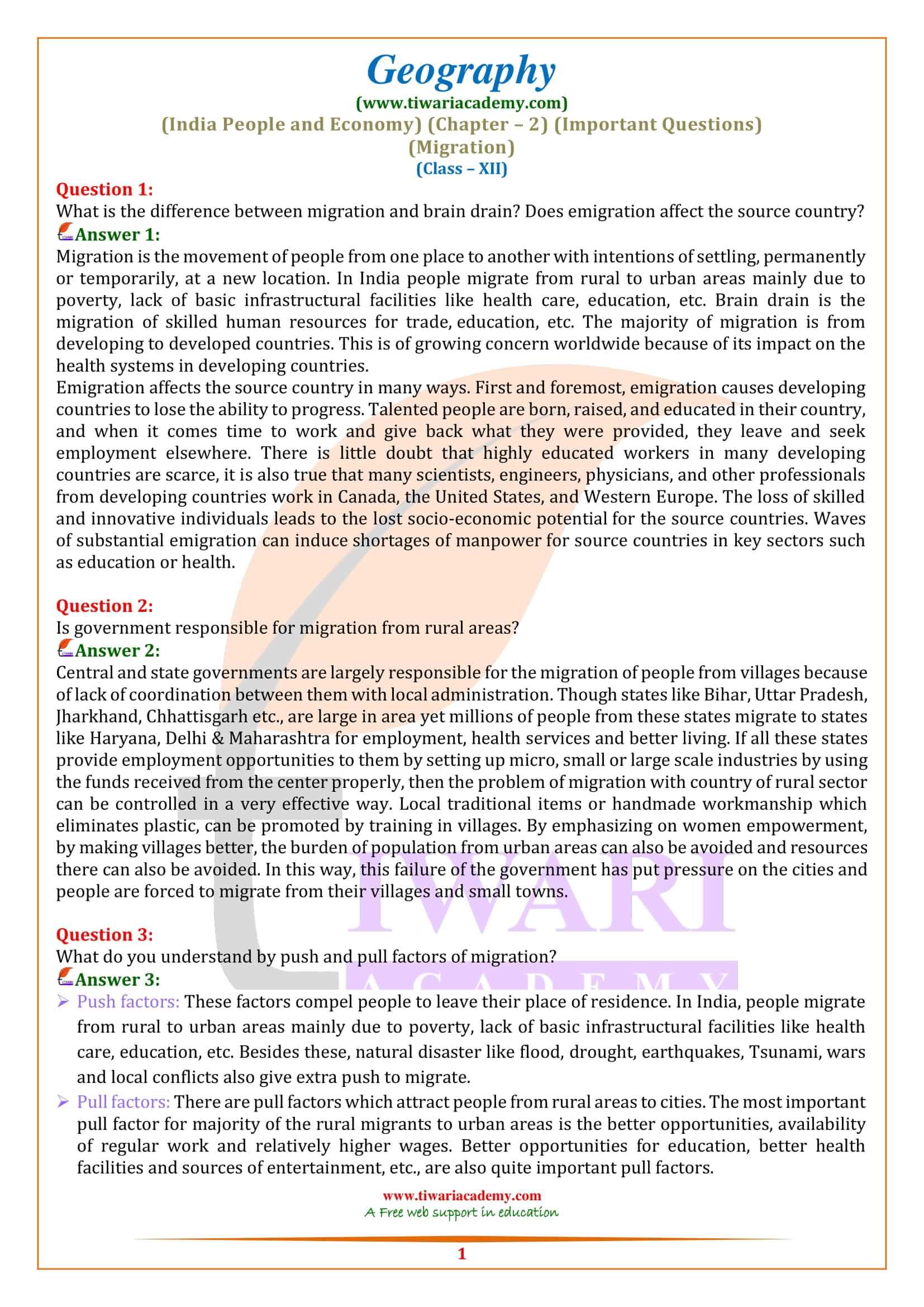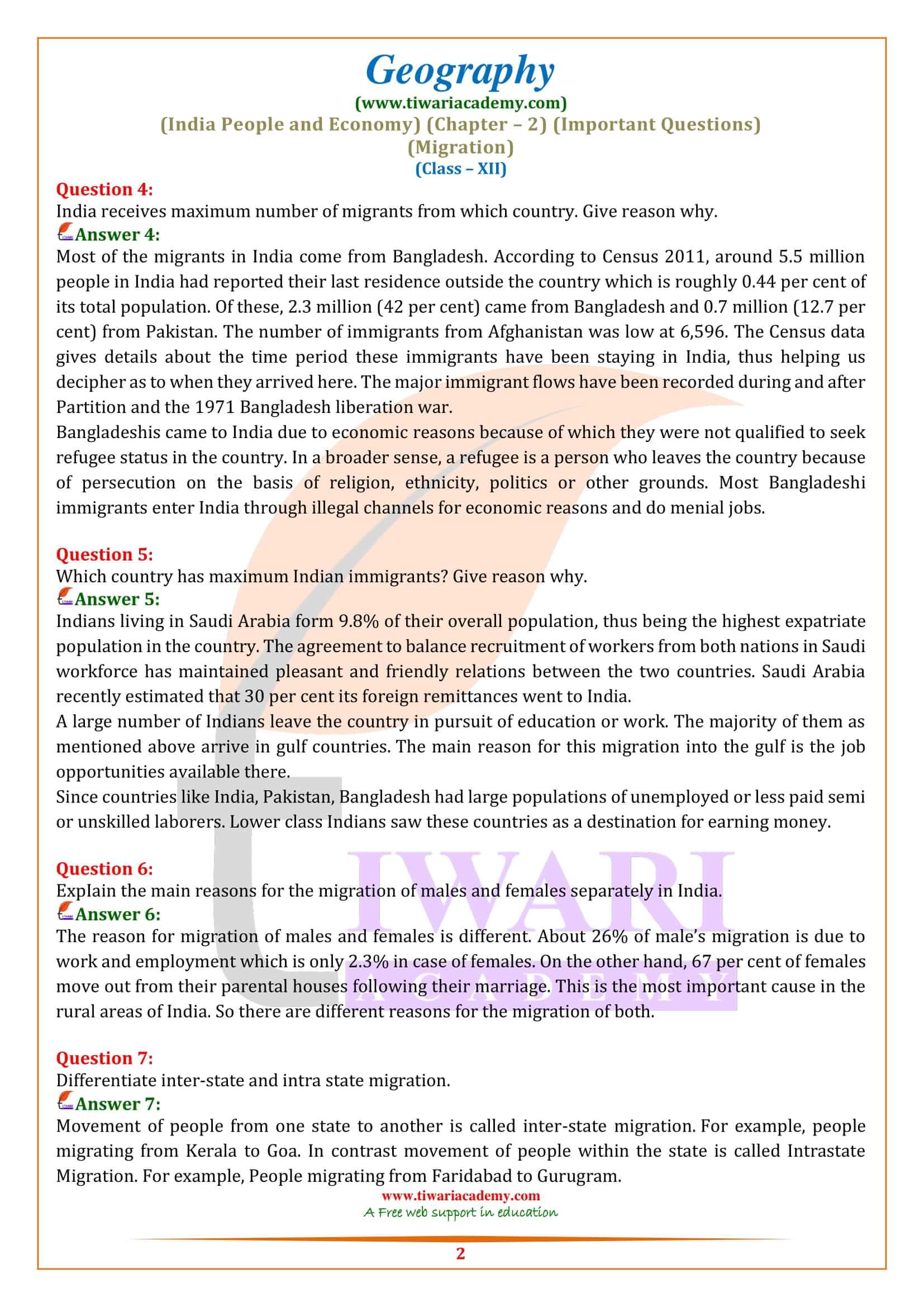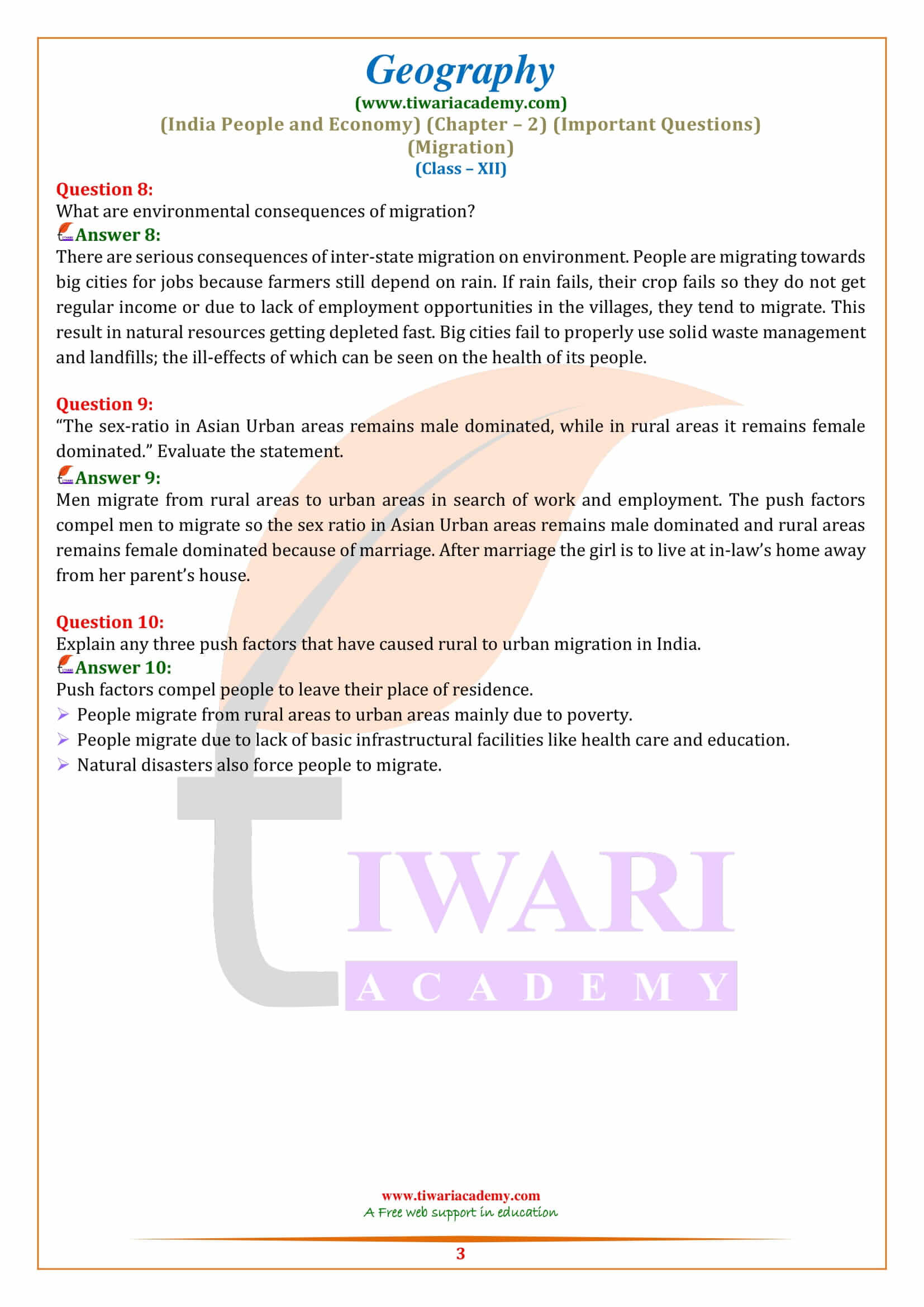Class 12 Geography Part 2 Chapter 2 Important Questions of Migration: Types, Causes and Consequences with complete explanation for CBSE exams 2025-26. Get here extra question answers of 12th Geography Part 2 India People and Economy Chapter 2 with exercises.
Class 12 Geography Chapter 2 Important Questions
Class 12 Geography Chapter 2 Important Extra Question Answers
What is the difference between migration and brain drain? Does emigration affect the source country?
Migration is the movement of people from one place to another with intentions of settling, permanently or temporarily, at a new location. In India people migrate from rural to urban areas mainly due to poverty, lack of basic infrastructural facilities like health care, education, etc. Brain drain is the migration of skilled human resources for trade, education, etc. The majority of migration is from developing to developed countries. This is of growing concern worldwide because of its impact on the health systems in developing countries.
Emigration affects the source country in many ways. First and foremost, emigration causes developing countries to lose the ability to progress. Talented people are born, raised, and educated in their country, and when it comes time to work and give back what they were provided, they leave and seek employment elsewhere. There is little doubt that highly educated workers in many developing countries are scarce, it is also true that many scientists, engineers, physicians, and other professionals from developing countries work in Canada, the United States, and Western Europe. The loss of skilled and innovative individuals leads to the lost socio-economic potential for the source countries. Waves of substantial emigration can induce shortages of manpower for source countries in key sectors such as education or health.
Is government responsible for migration from rural areas?
Central and state governments are largely responsible for the migration of people from villages because of lack of coordination between them with local administration. Though states like Bihar, Uttar Pradesh, Jharkhand, Chhattisgarh etc., are large in area yet millions of people from these states migrate to states like Haryana, Delhi & Maharashtra for employment, health services and better living.
If all these states provide employment opportunities to them by setting up micro, small or large scale industries by using the funds received from the center properly, then the problem of migration with country of rural sector can be controlled in a very effective way. Local traditional items or handmade workmanship which eliminates plastic, can be promoted by training in villages.
By emphasizing on women empowerment, by making villages better, the burden of population from urban areas can also be avoided and resources there can also be avoided. In this way, this failure of the government has put pressure on the cities and people are forced to migrate from their villages and small towns.
What do you understand by push and pull factors of migration?
Push factors: These factors compel people to leave their place of residence. In India, people migrate from rural to urban areas mainly due to poverty, lack of basic infrastructural facilities like health care, education, etc. Besides these, natural disaster like flood, drought, earthquakes, Tsunami, wars and local conflicts also give extra push to migrate.
Pull factors: There are pull factors which attract people from rural areas to cities. The most important pull factor for majority of the rural migrants to urban areas is the better opportunities, availability of regular work and relatively higher wages. Better opportunities for education, better health facilities and sources of entertainment, etc., are also quite important pull factors.
Which country has maximum Indian immigrants? Give reason why?
Indians living in Saudi Arabia form 9.8% of their overall population, thus being the highest expatriate population in the country. The agreement to balance recruitment of workers from both nations in Saudi workforce has maintained pleasant and friendly relations between the two countries. Saudi Arabia recently estimated that 30 per cent its foreign remittances went to India.
A large number of Indians leave the country in pursuit of education or work. The majority of them as mentioned above arrive in gulf countries. The main reason for this migration into the gulf is the job opportunities available there.
Since countries like India, Pakistan, Bangladesh had large populations of unemployed or less paid semi or unskilled laborers. Lower class Indians saw these countries as a destination for earning money.
Explain the main reasons for the migration of males and females separately in India.
The reason for migration of males and females is different. About 26% of male’s migration is due to work and employment which is only 2.3% in case of females. On the other hand, 67 per cent of females move out from their parental houses following their marriage. This is the most important cause in the rural areas of India. So there are different reasons for the migration of both.
Differentiate inter-state and intra state migration.
Movement of people from one state to another is called inter-state migration. For example, people migrating from Kerala to Goa. In contrast movement of people within the state is called Intrastate Migration. For example, People migrating from Faridabad to Gurugram.




